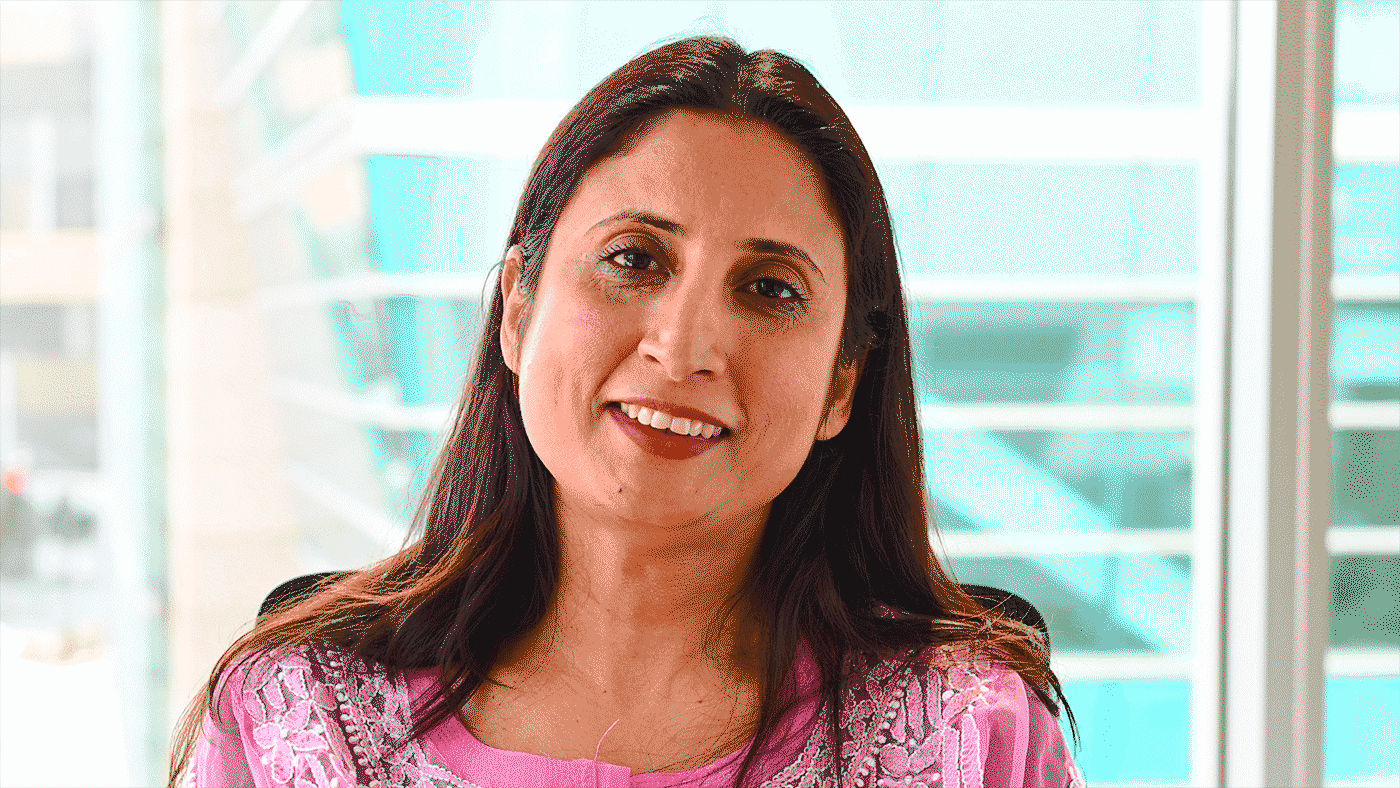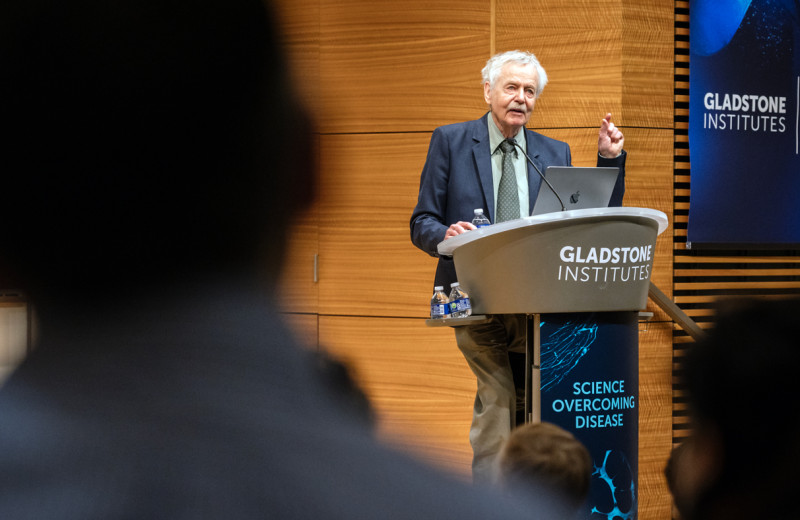Gladstone NOW: The Campaign Join Us on the Journey✕

Ritu Kumar had already been following the work of Gladstone researchers before she joined the team.
Ritu Kumar, PhD (she/her), is the director of the Stem Cell Core at Gladstone Institutes. Kumar received her PhD in India, where she’s originally from, before she moved to New York City to pursue a postdoc in the field of stem cell research. After living and working in New York City for 18 years, she joined Gladstone Institutes in the summer of 2021.
What brought you to Gladstone?
The idea and the excitement of being part of the fascinating and cutting-edge science is what really brought me to Gladstone. I saw this as an opportunity to evolve as a stem cell biologist. I had been following the work of several scientists at Gladstone for many years, and I found the idea of working and collaborating with them to be very motivating.
What do you like about Gladstone?
Apart from the extraordinary science that is going on, I enjoy the collaborative and supportive work environment. Gladstone has a culture of compassion. Here you know that somebody will always have your back, no matter what.
Were you interested in science as a child?
I was very much interested in science as a child. In school, biology and physics were my favorite subjects, and they still are. Science was effortless for me, and I was lucky to have good teachers and mentors who really taught me science.
Why did you decide to go to graduate school?
For me, graduate school was the only thing that I wanted to do. Nothing else ever crossed my mind. It was like karma.
Can you describe your work?
As the director of the Stem Cell Core, my team currently works on several projects in collaboration with various investigators at Gladstone. For example, we aim to understand the function of specific genes in heart development. We’re working on modifying the expression of these genes through gene editing technology to eventually understand their functions during various developmental processes.
What do you like about working in science?
While science is challenging, it is never boring. Working in science keeps me always curious, and that is why I enjoy working in science.
What do you do when you are not working?
Mostly I’m reading and spending time with family and friends, and sometimes cooking. The Bay Area is very nice, so I enjoy going places and taking small walks.
If you could learn to do anything, what would it be?
A big part of science is about presenting your work in an effective way, and sometimes that involves presenting to a non-scientist audience. I feel that I’m not too good at that, and would like to learn how to improve my presentation skills.
What is your hidden or unique talent?
Not losing hope when times are tough, and believing in my abilities and tenacity. There is always a way, you just have to be resilient.
If you could meet any scientist from any point in time, who would it be and why?
The scientist I really wanted to meet is Shinya Yamanaka. Luckily, he is an investigator at Gladstone, and so my dream has already come true. This was actually one of the reasons I joined Gladstone.
March is Women’s History Month. Who are some of the women in your career that have helped mentor you?
There are many women who have influenced me in my life and my career, and those are not big names—these are my friends, women in my family, and my women colleagues. These women in my life have taught me how to be self-reliant. Many women colleagues all throughout my career have been my mentors.
What are some of the changes you’d like to see for women in STEM?
Obviously, I'd like to see more representation of women in STEM, particularly in the fields of engineering and computer science. I’d also like to see more women in senior leadership positions. Most importantly, I’d like to see changes in sociocultural norms that inhibit women from pursuing STEM education and careers.
Want to Join the Team?
Our people are our most important asset. We offer a wide array of career opportunities both in our administrative offices and in our labs.
Explore CareersA Sculptor of Modern Regenerative Medicine
A Sculptor of Modern Regenerative Medicine
Among his myriad accomplishments, Rudolf Jaenisch—winner of the 2025 Ogawa-Yamanaka Stem Cell Prize—was the first to demonstrate the potential of induced pluripotent stem cells to treat disease.
Awards Ogawa Stem Cell Prize Profile Regenerative Medicine Stem Cells/iPSCsMeet Gladstone: Shijie Wang
Meet Gladstone: Shijie Wang
Shijie Wang, a postdoctoral scholar in Steve Finkbeiner’s lab, uses artificial intelligence, robotics, and stem cell technologies to uncover how brain cells die in neurodegenerative diseases like Alzheimer’s and Parkinson’s.
Profile Neurological Disease Finkbeiner Lab AI Robotic MicroscopyMeet Gladstone: Oscar Yip
Meet Gladstone: Oscar Yip
Oscar Yip is advancing Alzheimer’s research in Yadong Huang’s lab at Gladstone while drawing inspiration from his family, community, and his broader goal of helping patients.
Graduate Students and Postdocs Profile Alzheimer’s Disease



